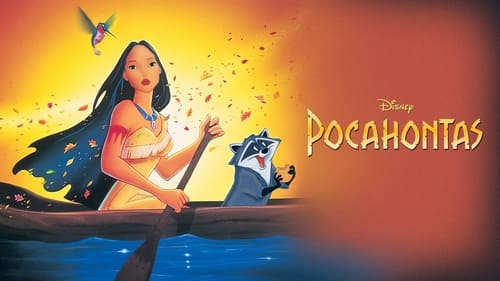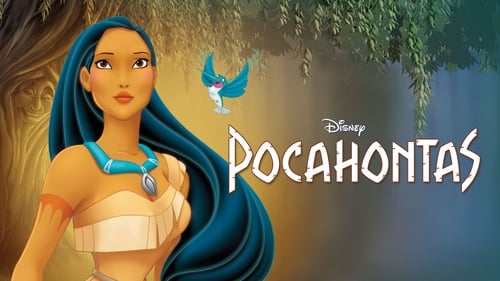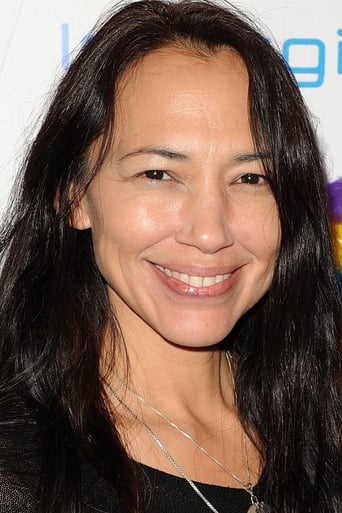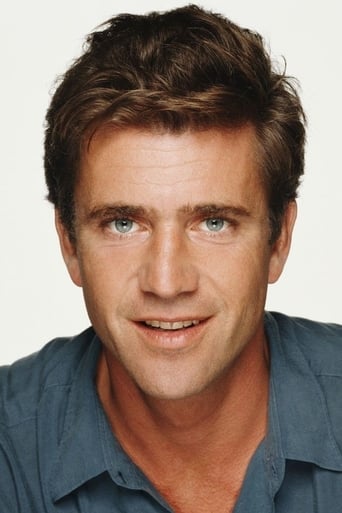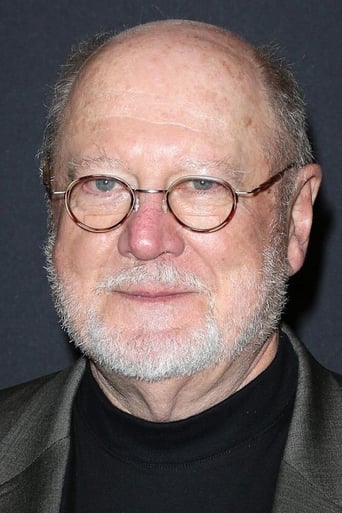Sexyloutak
Absolutely the worst movie.
Dynamixor
The performances transcend the film's tropes, grounding it in characters that feel more complete than this subgenre often produces.
Griff Lees
Very good movie overall, highly recommended. Most of the negative reviews don't have any merit and are all pollitically based. Give this movie a chance at least, and it might give you a different perspective.
Marva
It is an exhilarating, distressing, funny and profound film, with one of the more memorable film scores in years,
Richard Hsu
Do you remember, when you were little, how you sat with your family on a boring night and watched Pocahontas together? Pocahontas is a 1995 Disney animation that heavily relied on Native American history and culture to entertain the American children. Pocahontas is one of those movies in which you enjoy watching when you were little, but the only reason you would re-watch it is for nostalgia. However, besides providing us with childhood memories, Pocahontas also provided us with a schema that models our concepts of Native Americans culture and values, which we refer to growing up. In addition, it is a movie that emphasized on romance rather than the Native American culture.First of all, although the movie is based on a historical event, there are several significant historical inaccuracies. In the Disney adaptation, Pocahontas is a young adult while in reality she was only eleven or twelve when she met John Smith. This brings into question the primary conflict that Pocahontas faces in the movie: the forbidden love between her and John Smith. The real age difference between Pocahontas and Smith, along with several historical speculations, suggests that there was never any real romantic relationships between the two. In addition, one obstacle that stood in between the love of Pocahontas and Smith is her arranged marriage with Kocoum. Historically, there are mentions of her marrying Kocoum (although not proved), but it happened during her story with John Rolfe and not with Smith. Furthermore, even the famous story of how Pocahontas saved John Smith from death may be partially false. Some historical accounts suggest that Pocahontas saving Smith was part of a ritual Native Americans perform to welcome a stranger as family.These historical inaccuracies show how the Disney film does not place much emphasis on being historically accurate, but more on developing a romanticized plot that the American audience and children desires. Actually, one of the first pitch for the idea behind Pocahontas is "an Indian princess who is torn between her father's wishes to destroy the English settlers and her wishes to help them—a girl caught between her father and her people, and her love for the enemy." This is shown towards the end of the film where the Native Americans and English settlers were about to wage war with each other. The entire mise-en-scène (the effect of the details in the setting), in which the color of the skies turned from a calm blue to a violent red, shows Pocahontas's dilemma between her tribe and her love. Another technique that the producers used to emphasize the romance between Pocahontas and Smith is to develop the character of Smith as a lovable hero. Before he met Pocahontas, he is just another Englishman that likes adventures and is willing to kill "Injuns." For example, the scene was low key (lighting is dimmed to show shadows and darkness) just when he was about to shoot Pocahontas, which emphasizes the dark and suspicious side of Smith that is willing to kill Native Americans. However, after he met Pocahontas, Smith is suddenly developed into a kind character that is absolutely in touch with the Native American culture (for instance when he could see Grandmother Willow). This "fated" transformation of the "hero" in the script allows the audience to disregard unethical actions of Smith's past (and any other Englishmen for the matter) and focus solely on the development of the romance throughout the movie. In the end, this movie never truly teaches about the Native American history and culture, but is just another Western romanticized film adaptation of the Native American culture. Because the purpose of the film is to be more "socially responsible" than "historically accurate," as supervising animator Glen Keane explains, there are several instances where they misrepresented the Native American culture in the film (despite hiring Native American consultants and doing other research on their own). For example, the physical appearances of the Native Americans in the film were not representative of the actual Powhatan people (Pocahontas's tribe). One of the most popular representation of Native American in Western film and media is the use of headdresses (or war bonnets) and feather headbands. Pocahontas is not an exception to this misrepresentation: it is seen that chief Powhatan wears a headdress and Kocoum wears a feather headband. In reality, however, headdresses and feather headbands were only worn by a small number of tribes that were West and North of the Powhatan tribes. Despite this, one thing that Disney and their consultants did get right is the clothing style of the Native Americans: shirtless with breechclouts and leggings for men, and one-piece dresses for women. Finally, Pocahontas is a well-made animation in 1995 for a movie about Native Americans in 1995. The producers went through extensive research on the culture of the Native Americans to make sure that they are using the most historically accurate information (such as for the clothing of the Native Americans). However, their true intentions were never to be historically accurate, but to produce a likable American film, which means that there are several places where historical accuracy is sacrificed.
salehahoffman
Pocahontas is a charming story about two young people who fall in love despite the fact that the groups they belong to want to kill each other; much like Shakespeare's Romeo and Juliet. This one is a classic Disney movie that captures the audience's attention with unrealistically beautiful people, great music, and great animation that is characteristic of Disney. However, I don't think the climax lives up to the tensions in the rest of the plot. Also, after that there are no real negotiations between the Englishmen and the Native Americans about how they will coexist in Virginia. Finally, the whole movie is very historically inaccurate and should not be showed to a history class for educational purposes. The climax is the scene where both sides are ready to fight each other and the chief is about to smash John Smith's head in with a rock. This scene is over within a couple minutes and the movie is over soon after that. The entire movie leads up to the climax, like in any movie, but the scene itself is somewhat disappointing. Pocahontas throws herself on top of John Smith and just like that her father has a change of heart and so do the colonists. There is no internal conflict shown for anyone except Pocahontas about the killing of John Smith, and because of that the climax is lacking. In addition, there are no real negotiations between the Englishmen and the Native Americans after the war is avoided about how they will coexist in Virginia. After the war is avoided, Ratcliffe, the governor, attempts to assassinate the chief and because John Smith throws himself in front of the bullet, the potential repercussions are ignored and everyone suddenly gets along. This is entirely unrealistic because, as everyone knows, getting two different groups of people to get along can be very, very difficult. Also, for the entire movie each respective group tells their people that the other is terrible and out to get them. The colonists are told that the Native Americans are "savages" and to shoot them on sight. Alternatively, the Native Americans are told that the white people are violent and barbaric and call on other tribes to help them in the seemingly inevitable war. This kind of negative sentiment is not just given up in a matter of five minutes. It should have taken them much longer to work out their differences. This film should not be showed to a history class as it is very historically inaccurate and therefore cannot really teach students anything about the way life was when the English arrived in Jamestown, Virginia. In the movie, the character who falls in love with Pocahontas is John Smith. However, the person who really married Pocahontas was John Rolfe. John Smith did initiate friendly relations with the Native Americans, but it was John Rolfe that brought Pocahontas to England where she died of dysentery a few years after she gave birth to their son. Also, while it is not actually known when exactly Pocahontas was born, it is said that she was born around 1595. Assuming this is true, in 1607, when the English arrived at Jamestown, she would have been 12 years old. In the movie she was portrayed to be much older than this and falls in love with 26 year old, John Smith who was more than twice her age. Finally, in the movie, Ratcliffe is depicted as this rich, gold-hungry leader who wants to kill all of the "savages" and forbids John Smith from going to talk with the Native Americans to promote peace. Ratcliffe orders his men to shoot any Native American on sight and, as a result, sparks the beginnings of a war with them. He also refuses to accept the fact that the Native Americans have agreed to put down their weapons and live in peace with the Englishmen and in an attempt to shoot the chief of their tribe, accidentally shoots John Smith. Most of this is historically inaccurate. While it is true that many of the colonists didn't like him, Governor Ratcliffe actually asked John Smith to begin friendly relations with the Native Americans when he was in office and encouraged him to establish trading between them. These three are among the many inaccuracies in this movie that make it uninformative.In conclusion, although I enjoyed the movie very much, it is historically inaccurate and therefore can't really teach anything about history. Pocahontas is a nice story with a great soundtrack, however, the climax doesn't encompass the entire plot efficiently, there are no peace negotiations, and important aspects of the movie are historically inaccurate.
Hitchcoc
We must start with the foundation statement that this is not an historical retelling of the story of early America. We don't know what went on at that time, so we are off the mark at the beginning. Can you imagine the dark times that were involved in this era, with a group of settlers trying to establish some kind of community, and a Native American presence confused and afraid what was going on. So what Disney did was turn this into a folk tale which oral traditions have been doing forever (e.g. Paul Bunyan or John Henry or, more appropriately, Davey Crockett). I mean they sing and talk to trees. The romance had to be very strained. Throw in the search for gold and the greed, and you have a classic love in the face of barriers story. Also, there are a couple of terrific songs in this film. No, it's not "The Lion King" but many very good films are not "The Godfather" either. It doesn't mean they can't stand on their own.
datautisticgamer-74853
I took no issue with the historical inaccuracies in the case of Pocahontas, since they only affected the characters themselves instead of what they do throughout the film (looking at you, Robin Hood). But anyway, on to the rest. The songs are beautiful (if the lyrics aren't exactly memorable, but you will remember how pristine or provocative they sound, namely Colors of the Wind vs. Savages), the animation is dazzling, and some of the characters can keep the movie fueled outside of song. There are still a load of dull moments, though, and the humor doesn't work. While I found it to be a tad more enjoyable than some of Disney's older movies, there wasn't enough to keep me in some way engaged. This also happened with The AristoCats, though that one I ranked higher since it tried more to re-engage me and was overall more successful. Pocahontas is just another mixed bag of a Disney film that you should give yourself reasonable debate over before seeing it. Don't worry, however, since later, we would get a more important "Disney" film.






